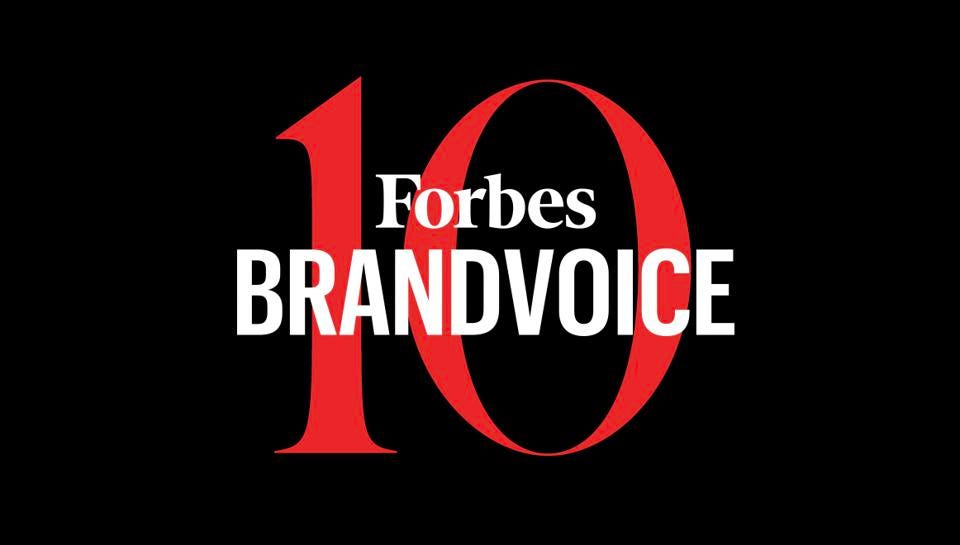Table of Contents
What is Brand Journalism?
Brand Journalism refers to a type of marketing that focuses on creating content that looks, feels, and reads like traditional journalism. Brand Journalists tell stories about their own brand or company in order to promote it and engage with potential customers.
Brand journalism is defined as a creative approach to journalistic marketing which uses storytelling strategies to help create brand awareness, engage customers and generate leads. It is also known as corporate journalism or corporate media – it differs from traditional marketing in that it rejects the interruption-based tactics of traditional media outlets such as television commercials and magazine ads.
It is a type of journalistic promotion that strives to create an emotional connection between the brand and its audience by providing helpful information that is both relevant and engaging. Brand Journalists produce content across multiple channels, including news media, blogs, videos, and podcasts.
The brand journalism journey begins with the concept of telling stories. Brand journalists strive to use engaging content and storytelling techniques that capture the attention of their target audience. The goal is to create a connection between the brand and its customer base, giving customers an emotional investment in the company or product through storytelling.
Brand journalism content can also help businesses reach potential customers who may be otherwise inaccessible, as well as allow them to become more credible and trusted in the market. In summary, great brand journalism is a unique approach that combines traditional journalistic techniques and mainstream media with digital marketing strategies to create compelling stories that have the potential to build trust, loyalty, and engagement with customers.
Origin of Brand Journalism
Believe it or not, the history of Brand Journalism started with franchises.
In 2004, McDonald’s Chief Marketing Officer Larry Light said that traditional advertising was no longer as effective as it used to be and that one advertisement cannot explain the entire story.
Rather, he said that McDonald’s had started using a more modern marketing method known as “brand journalism.”
According to Light, brand journalism is a means of documentation of “what happens to a brand in the world” which can create promotional materials that, given enough time, could relay an entire brand story.
He disagreed with the standard marketing and advertising strategies that prioritize brand positioning, instead promoting a content stream model that uses multiple channels and journalistic writing. His process is similar to how an editor would put together a magazine, compiling diverse content pieces targeting different readers – thus it got the name- ‘brand journalism’.
Many years ago, franchise systems were one of the first to adopt the practice, and it is now widely considered a top method for lead generation and customer engagement. Companies both large and small have utilized it with great success.
A decade ago, many people considered search to be the biggest marketing trend. In the ever-changing landscape of technology, social media platforms had become increasingly popular over the past five years.
We are currently in the content marketing era, and the quality of your brand’s stories can have a significant influence on how successful your marketing is. Therefore, many companies are competing to hire journalists- most of whom lost their jobs when newspapers started shutting down.
Why is Brand Journalism important?
- Increases visibility and builds awareness: Brand journalism provides a unique way to get your message out. Content that is well-written, informative, and relevant can spread quickly through multiple channels on the web, helping you reach new audiences.
- Establishes thought leadership: Brand journalism allows companies to showcase their expertise in their field. It gives them an opportunity to demonstrate what sets them apart from their competitors, and to provide valuable insights into their industry.
- Keeps customers informed: Brand journalism allows companies to stay on top of industry news and trends, so they can keep their customers up to date on the latest developments. Brand journalists can also use their content to address customer issues or frequently asked questions proactively.
- Generates leads: Brand journalism can help drive organic traffic to your website, which in turn can lead to increased sales and more business opportunities.
- Develops a unique voice on your own media channels: Brand journalism gives you control over how you want your message delivered with minimal reliance on third-party platforms like newspapers and TV networks. This way, you get to craft your unique voice.
How do you build a team of brand journalists?
1. Hiring Experienced Journalists: Brand journalism requires skilled writers who are comfortable with using multiple mediums, including web, print, video, and audio. Experienced journalists have the skill set to create a compelling story that can engage your target audience.
2. Training Your Existing Content Team: Brand journalism is more than just writing content; it requires an understanding of the principles and techniques required to craft a successful campaign. Train your existing team in brand journalism so they can create effective content strategies to help promote your company’s message.
3. Outsourcing To Professional Brand Journalism Studios: Brand journalism media company has the expertise to provide quality content creation services for a variety of industries. They have access to experienced journalists who specialize in creating compelling stories and can create content quickly and efficiently.
How does brand journalism work?
1. Developing a brand journalism strategy
Brand journalism should follow a set of principles that will guide the content creation process. Before you start creating content, it is important to understand your target audience and develop a strategy for how you want to engage them.
2. Using Your Experts
Brand journalists need expertise on the topics they are writing about in order to create accurate and engaging stories. Use your in-house experts as sources for content and get their input on the topics you are covering.
3. Telling The Truth
Brand journalism is all about credibility. Your readers need to trust that what they’re reading is true and accurate, so make sure your content is factually correct and well-researched.
4. Taking A Stand
Brand journalists should be willing to take a stand on certain topics, and challenge readers with thought-provoking questions that will spark discussion.
5. Choosing your rand Heroes In Brand Journalism
Brand journalists need to pick the right people or companies to feature in their stories. Choose heroes who have a track record of success, and with who readers will be able to relate.
What’s included in brand journalism?
1. Brand stories
Brand journalists can create content that tells the story of a company’s journey, and how it has evolved. Brand stories can be used to showcase the company’s values, mission, and goals.
2. Interviews
Brand journalists should conduct interviews with experts, customers, and partners. These interviews provide valuable insight into the company’s core values, mission, and goals.
- Podcasts
- Magazines
- Blogs
- Video content
- Reports
- Editorial content
3. Podcasts
Brand journalism can include podcasts, which is a great way to engage with your audience and build relationships.
Brand journalists should create podcasts that feature interesting stories, interviews, and expert opinions.
4. Magazines
Brand journalists can create magazines that contain content relevant to the company’s target audience.
These magazines should be informed by research and provide valuable information for the reader.
5. Blogs
Brand journalists can create blogs to provide helpful content and updates on their company’s activities.
A blog is a great way to get your message out there and engage with customers, partners, and industry experts.
6. Video Content
Brand journalists can create videos that provide helpful information, showcase products, and services, and give viewers an insider’s look at the company.
7. Reports
Brand journalists can create reports to share valuable data and insights about a company or industry.
Reports can be used to highlight trends, research findings, and analysis of market conditions.
8. Editorial Content
Brand journalists should create content that is both informative and entertaining.
Editorial content should be written in a way that engages the reader while providing valuable insights into the company’s mission and goals.
Brand Journalism vs Content Marketing:
Brand journalism focuses on storytelling while content marketing focuses on promotion. Brand journalists tell stories about a company and its products or services, while content marketers create content to promote the company’s offerings and increase sales.
Brand journalism is about building relationships with customers, partners, and industry experts, while content marketing is about driving conversions and sales. Brand journalists focus on creating content that builds trust and credibility, while content marketers focus on driving traffic to a website or product page.
Brand journalism is more focused on creating engaging stories, while content marketing is more focused on creating actionable pieces of content. Brand journalists need to create compelling stories that capture the attention of readers, while content marketers need to create content that encourages readers to take action.
Brand journalism is more focused on long-term goals and results, while content marketing is more focused on short-term goals and metrics. Brand journalists need to think about the big picture when creating content, while content marketers are more concerned with immediate results.
Brand journalism is an important part of any content marketing strategy, as it helps companies to create engaging and compelling stories that build trust and credibility with customers, partners, and industry experts.
Companies using brand journalism
1. The Red Bulletin of Red Bull
Red Bull’s Brand Journalism project has been incredibly successful, with its Red Bulletin magazine With a total print run of 373,700 copies. The magazine contains stories about extreme sports, music, and culture.
The magazine’s on-target distribution concept helps it in reaching a young, critically thinking & technology/finance-savvy target group.
2. My Network Life of Cisco
Cisco’s Brand Journalism program, My Network Life, is a blog that connects customers, partners, and industry experts. The blog features unique stories from around the globe about how technology is affecting our everyday lives.
The writers discuss the internet of things, cloud, mobility, security, and more- transformation technologies that are continually improving conditions worldwide. They also explain how people at Cisco use these technologies to better their own lives as well as those around them.
Not only can the company adopt that as a tool for several purposes, like the brands we’ve analyzed in this article, but it’s essential to check out real examples and learn from them for inspiration.
3. BrandVoice of Forbes
Forbes BrandVoice allows companies to share their stories and insights directly with the Forbes audience. BrandVoice lets companies publish content on Forbes.com, while still preserving their unique voice.
Over 10 years, with nearly 300 partners, 20,000 posts, and more than 300 million page views, BrandVoice has become an invaluable tool for companies looking to reach and engage with the Forbes audience.
It has 427+ All-Time Partners, 338M+ All-Time Page Views, 669K+ All-Time Social Engagements, and 22K+ All-Time Posts.
Benefits of brand journalism
- Be seen by more people: It helps your content reach a larger audience, as journalists often share stories with their own networks. Brand journalism can also be used to create visibility when traditional advertising isn’t an option.
- Establish credibility: It can help establish your company as an expert in its field, as well as build loyalty with its customers. Brand journalism can also be used to tell stories that can’t be told through traditional forms of advertising or marketing.
- Educate your audience: It is an effective way to educate your target audience about the products and services you offer, as well as provide insights into industry trends and advancements. Brand journalism can also be used to increase customer engagement and motivate them to take action.
- Generate new leads: Brand journalism can help you generate more leads by providing content that is interesting and relevant to your target audience. It allows you to showcase the solutions you offer, which can then lead to increased sales.
- Connect with customers: Brand journalism can help you build relationships with customers by providing them with engaging content that resonates with them. It also enables you to show your company’s human side and foster a sense of trust between your brand and your target audience.
Conclusion
Brand Journalism can be an effective way for media companies and PR professionals to create high-quality content while rejecting traditional marketing methods.
Brand Journalistic content involves weaving personal stories, press releases, and other content into journalism-style stories that are featured on a company website or in other outlets.
A brand journalist needs strong journalism skills as well as a deep understanding of the brand and its core values to create effective and engaging content.
Brand Journalism is a great way to go beyond traditional mass marketing methods and make an impact with high-quality content that resonates with the intended audience.
Liked this post? Check out the complete series on Branding




